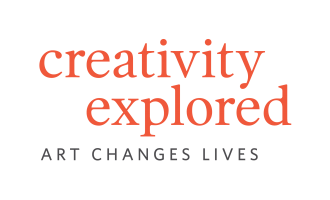使艺术世界更面向大众
Creativity Explored 为发育性残疾的艺术家提供一个展示他们过人天赋的平台。了解他们如何使用 Dropbox 等数字工具扩大影响范围和升华艺术作品。

使用的产品
Dropbox Transfer
工业
媒体和娱乐
大小
2-249
位置
加利福尼亚州旧金山市
背景
艺术对生活至关重要。Creativity Explored 正以此为信念。Creativity Explored 是一家以工作室为基础的组织,面向发育性残疾的成人。该组织与 100 多位艺术家合作,提供日常用品和个性化培训计划。更重要的是,它为残疾人提供一个表达自我的平台。
“我们为残疾艺术家提供一个以独特方式展现才华的地方,”Creativity Explored 艺术合作总监 Ann Kappes 解释说。“我们帮助我们的艺术家立足于当代艺术界,并第一次被视为艺术家。”
“我们是一家基层的中型非营利组织。当我们使用设计界都在用的一种工具时,这也有助于体现我们组织和艺术家的专业性。”

人人都可以触及艺术
Creativity Explored 艺术家们创作的作品经常出现在博物馆、画廊和艺术博览会上,还包括住宅开发项目、办公楼和酒店等的装饰作品。CB2 和 Dropbox 等公司授权艺术品用于产品或数字体验。总而言之,Creativity Explored 艺术家总收入超过 200 万美元。
Creativity Explored 中心是旧金山的大型工作室和画廊。在工作室中,艺术家们与其老师和导师并肩工作。该画廊每年接待约 1 万名参观者—去年除外,当时的疫情使面对面授课暂停且设施不予开放。
由于设施关闭,Creativity Explored 需要一种新的合作方式。因此,技术便派上用场了。现在,通过 Zoom 每周提供 24 节虚拟课程。此外,还为有需要的人提供互联网接入和 iPad。
转向在线教学大获成功。一些艺术家在新的虚拟环境中蓬勃发展,而另一些艺术家则没有可靠的交通工具往返于工作室。Creativity Explored 现可通过提供混合服务模式扩展其使命,这种模式可以通过面对面和在线机会满足艺术家的需求。
不幸的是,疫情带来另一个问题:画廊空置一年有余,因其无法举办展览和接待参观者。那么,如何在停工期间出售艺术品?Creativity Explored 再次求助于技术。
该组织为其所有艺术家的作品建立一个数字库。迄今为止已有 2 万多件作品的庞大目录,且收藏中的所有作品均可获得许可。这样,即使在艺术家们的实体艺术品售出后,他们仍可赚取收入。
专业艺术服务团队与建筑师、室内设计师和企业合作伙伴合作,帮助他们选择适合其项目的完美作品。这绝非易事,但 Dropbox 等数字工具可帮助整个流程顺利进行。

寻觅合适杰作
通常,新客户想要具有特定主题的艺术品,例如鸟、狗或维多利亚时代奇思妙想。艺术服务团队从库中挑选一系列适合主题的作品,有时一次多达 60 件作品。所有选品均上传并存储在 Dropbox 中,图片摆放地井然有序且易于浏览。然后,团队只需单击几下即可与客户共享整个项目文件夹。
Creativity Explored 客户遍布世界各地,而 Dropbox 帮助他们进行异步协作。无需安排跨多个时区的 Zoom 通话。相反,客户可以直接在 Dropbox 中共享评论和标注图像,艺术服务团队可以检查客户进度,而无需通过电话、短信或电子邮件打扰他们。Dropbox 会显示文件查看者和未查看者。
一旦客户选择要许可的图像,他们就会需要最终文件。高分辨率图像可能难以传送——通常它们对于电子邮件而言太大了——因此 Creativity Explored 需要一种可靠、专业的方式来发送大型文件。Dropbox 可以帮助艺术服务团队进行无缝数字交付,只需几秒钟即可传输最大 100GB 的文件。此外,客户即使没有 Dropbox 帐户,也可快速、轻松地访问内容。这能够有条不紊地完成整个过程,从而有助于 Creativity Explored 留下良好印象并口口相传。
“我们是一家基层的中型非营利组织,”Ann 说。“当我们使用设计界都在用的一种工具时,这也有助于体现我们组织和艺术家的专业性。”
